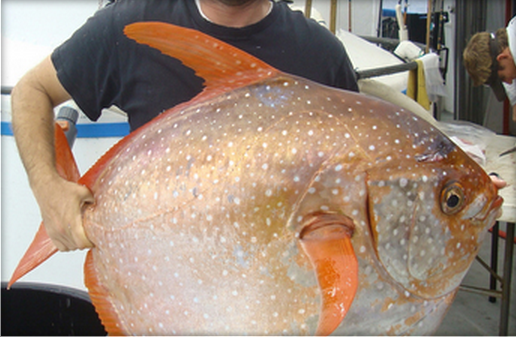First Warm-Blooded Fish Found
The car-tire-size opah is striking enough thanks to its rotund, silver body. But now, researchers have discovered something surprising about this deep-sea dweller: It's got warm blood.
That makes the opah (Lampris guttatus) the first warm-blooded fish every discovered. Most fish are ectotherms, meaning they require heat from the environment to stay toasty. The opah, as an endotherm, keeps its own temperature elevated even as it dives to chilly depths of 1,300 feet (396 meters) in temperate and tropical oceans around the world.
The opah, also known as the moonfish, has relatively small red fins decorating its large, round body, which can grow up to 6 feet (1.8 meters) long. These fins, which flap rapidly as the fish swims, turn out to be important in generating body heat for the opah.
Researchers first suspected that something might be strange about the opah after analyzing a sample of the fish's gill tissue. According to the new study, published May 14 in the journal Science, the blood vessels in the tissue are set up so that the vessels carrying cool, oxygenated blood from the gills to the body are in contact with the vessels carrying warm, deoxygenated blood from the body to the gills. As a result, the outgoing blood warms up the incoming blood, a process called counter-current heat exchange.
"There has never been anything like this seen in a fish's gills before," Wegner said in a statement. "This is a cool innovation by these animals that gives them a competitive edge. The concept of counter-current heat exchange was invented in fish long before [humans] thought of it."
To confirm that these special gills helped the opah stay toasty, the researchers tagged a number of moonfish with temperature monitors and tracked the fish as they dove. The fish spend most of their time at least 150 feet (45 m) below the ocean surface. No matter how deep they dive, however, their body temperature stays about 9 degrees Fahrenheit (5 degrees Celsius) warmer than the surrounding water. Fat deposits around the gills and muscles help insulate the fish, the researchers found.

No comments:
Post a Comment